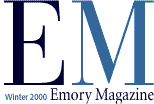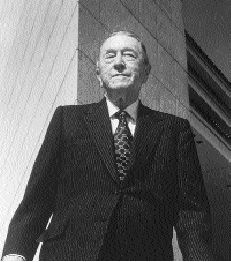|
|
||||||||||
|
Volume
75 Enigma: The Haunting of Uppergate House Wonderful
Woodruffs
The
overriding priority was "preeminence"–
|
Hardly a building or academic department exists at Emory that hasn’t been touched in some way by the Emily and Ernest Woodruff Endowment Fund. Established in 1979 when brothers Robert W. (above) and George W. Woodruff presented the University with an unrestricted gift of $105 million, the endowment fund has provided $387.3 million in income to the University. Approximately seventy percent has been spent to enrich academic programs and to support faculty and students–including those alumni featured on the following pages–and the remainder has funded building projects. When the endowment was established, much debate and deliberation went into determining Emory’s long-term goals as an institution and creating a plan to achieve those goals. Then—Emory University President James T. Laney articulated an overriding priority of “preeminence”–to become a national research and teaching university able to attract and support top faculty and the intellectually curious students and graduate assistants such thought inevitably attracts. Earnings from the endowment have been used to expand the faculties of Goizueta Business School, Rollins School of Public Health, Emory College, the Graduate School of Arts and Sciences, and the law school. To enhance teaching and academics, Woodruff funds have been allocated to The Carter Center, the Michael C. Carlos Museum, and the Information Technology Division. Nearly $24 million has been invested in the library’s collections and online resources. The online catalogs EUCLID and DOBIS owe their existences to the Woodruff endowment. The year-old Center for Library and Information Resources, which houses Emory’s virtual library resources, was partially funded by the Woodruff endowment. The Robert W. Woodruff professorships enable Emory to recruit “great scholars” around whom, says Provost Rebecca Chopp, “we could build departments and programs.” After twenty years, no one can deny that the Woodruff gift has changed the face of Emory and attracted bright minds to study, teach, and conduct research here. |
||||||||

